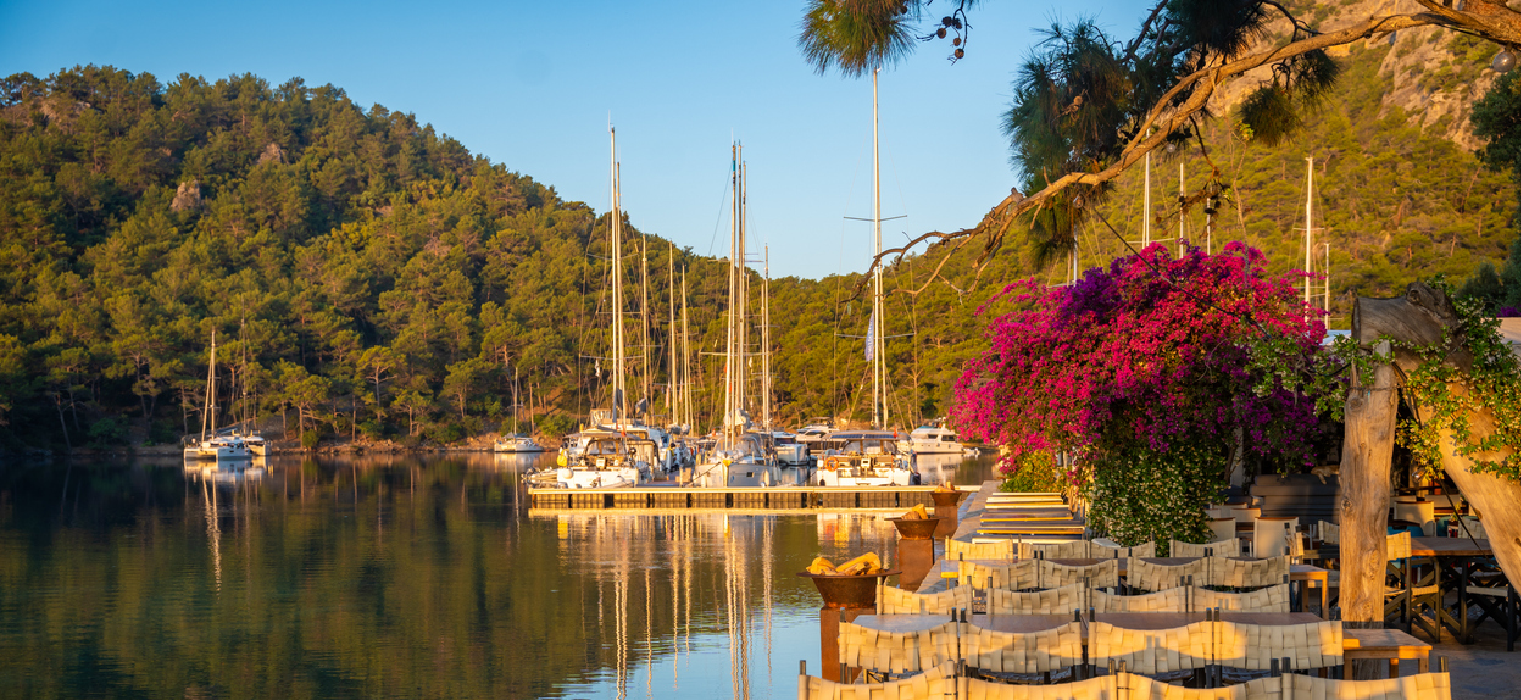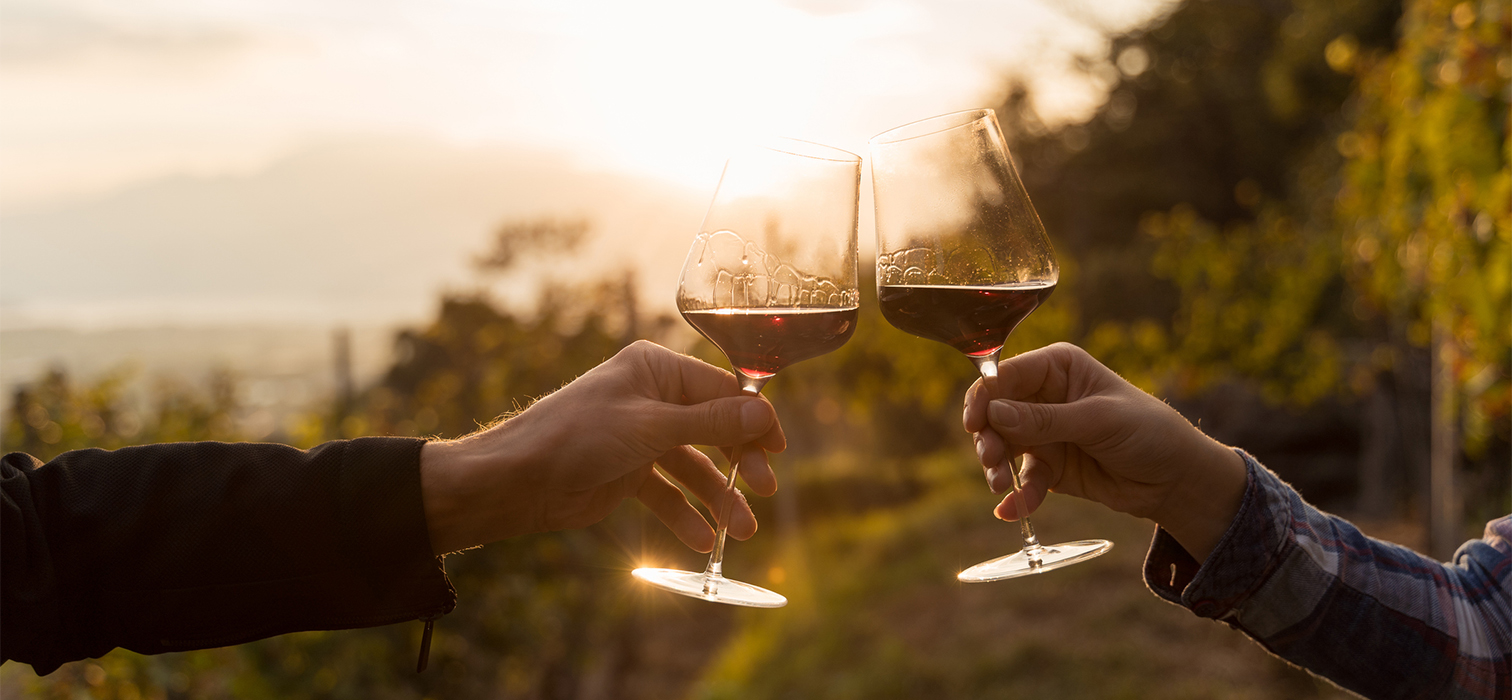
Wine expert Doğuhan Atış evaluates the vintage 2024.
Imagine starting this piece with Vincent Van Gogh’s “The Red Vineyard”. This painting, famous for being the only one sold during the artist’s lifetime, seems fitting as we find ourselves in the midst of the grape harvest. The vines are heavy with fruit, and the journey to the bottle has already begun.
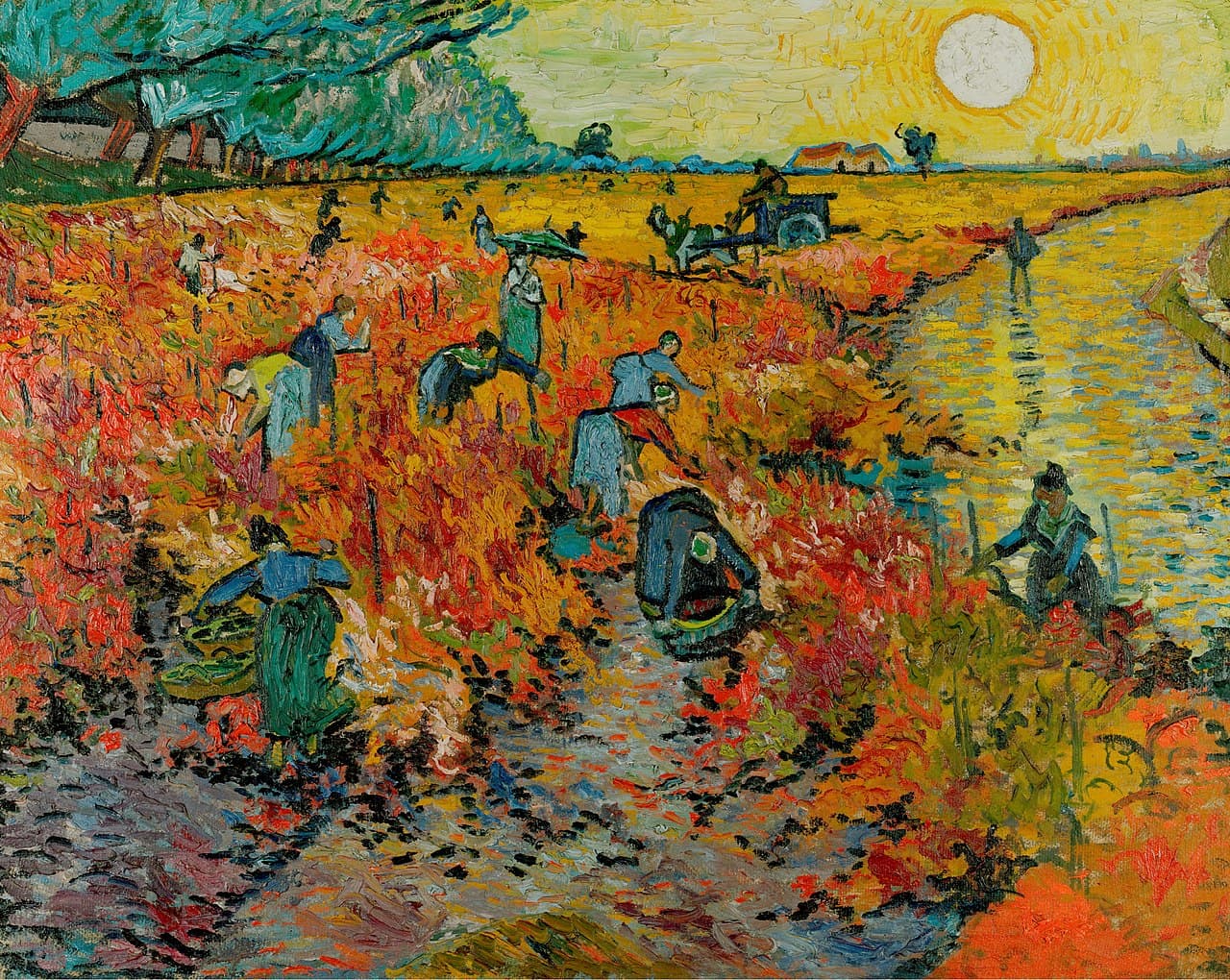
Have you ever stopped to consider the challenges that a grape must endure to become wine? As spring arrives, the vineyard stirs to life. The vines awaken, and tiny buds burst forth, transforming into delicate flowers. As the days pass, these blossoms swell, their rounded shapes taking form. Still green, they are now more than just flowers—they’ve become berries, ready for the next stage of growth. At this critical point, sunlight is essential, nurturing the grapes to ripen and develop their full potential.
As summer sets in, anticipation builds among winemakers. The white grapes begin to turn translucent, while others are carefully observed for the slightest hint of color change. One day, the vigneron spots it: a few green grapes have started to shift. This is the moment of veraison, where purplish and reddish hues appear on red varieties, blending with the green to create a spectrum of colors on a single bunch. The clusters look like nature’s own version of a rainbow, dotted with vibrant shades. It’s a poetic transformation, one of the many reasons winemaking feels like such a romantic endeavor. After all, the vineyard, much like the wine it produces, holds an undeniable charm and magic.
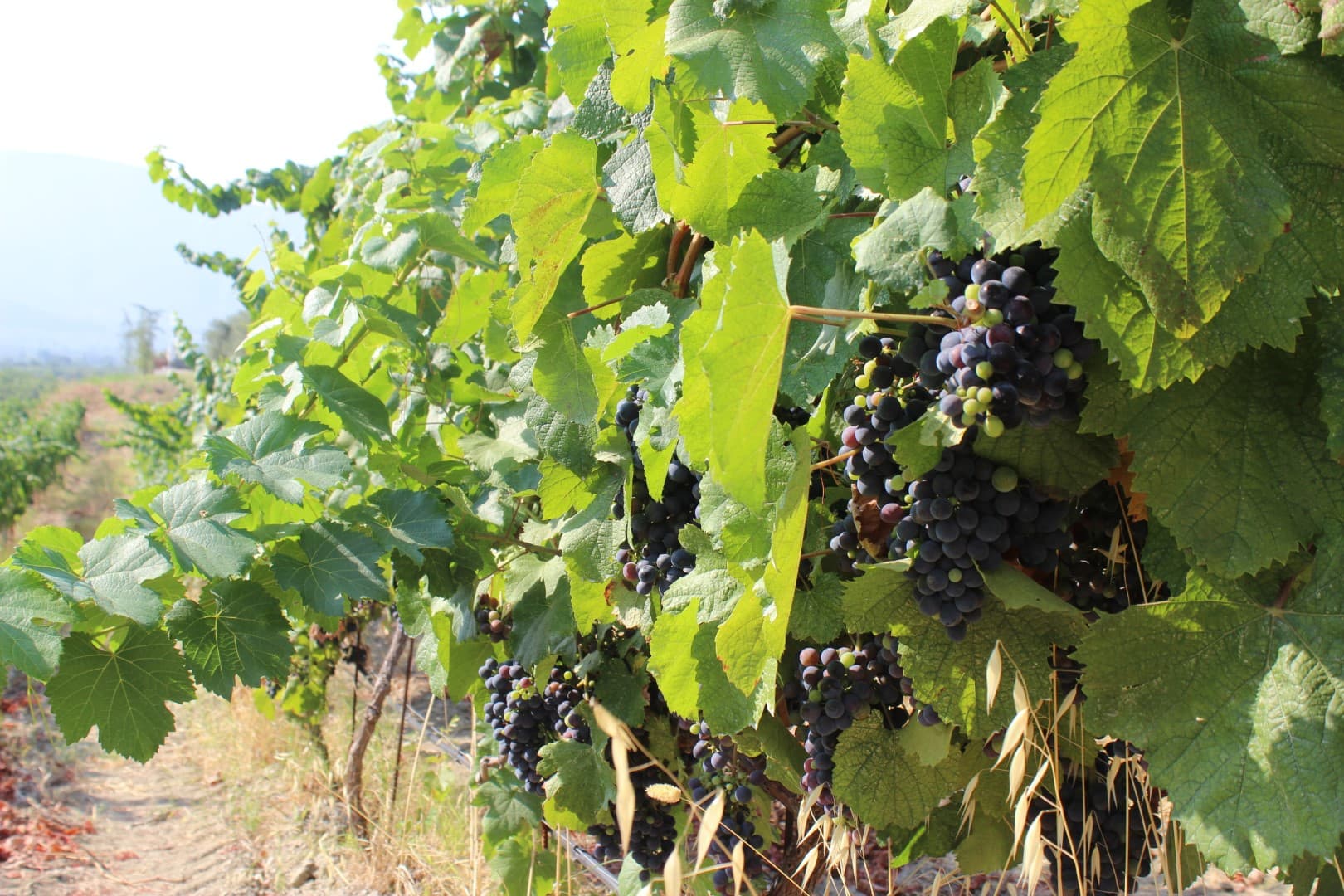
As the grapes continue to ripen after veraison, the vigneron watches closely, observing their transformation as they develop the desired color and size. This brings us to one of the most crucial decisions in winemaking: When is the perfect time to harvest? The process begins with regular measurements of the grape’s sugar levels, as this determines the potential alcohol content of the wine. However, harvesting isn’t simply a matter of metrics and calculations. The winegrower also relies on instinct, experience, and taste. They pick a grape from the vine, chew it thoughtfully, and assess its texture and aromatic richness. In short, the art of deciding the harvest combines scientific precision with the expertise born from years of working the land.
Once the harvest date is set, the vineyard buzzes with activity. But it’s not a one-day affair. Even if the vineyard grows the same grape variety, the grapes ripen at different rates depending on the terrain. Grapes from valley areas may mature slower than those on sun-drenched hillsides, requiring a section-by-section approach to harvesting. Additionally, vineyards often grow multiple grape varieties, each with its own timing. Some grapes are early bloomers, while others take their time to ripen. The vineyard’s geography also plays a role. In the Mosel region of Germany, known for its romantic hillside vineyards, harvesting is an entirely manual process. The steep slopes prevent the use of machinery, making the harvest both labor-intensive and slow. The work is far more grueling than in flat vineyard areas, but the effort pays off in the unique, high-quality wines this picturesque region produces.
By now, you’ve likely gathered that wine grapes thrive on heat and sunlight. These elements are essential for ripening, storing the sugars needed to later transform into alcohol during fermentation, and developing the complex aromas that define a great wine.
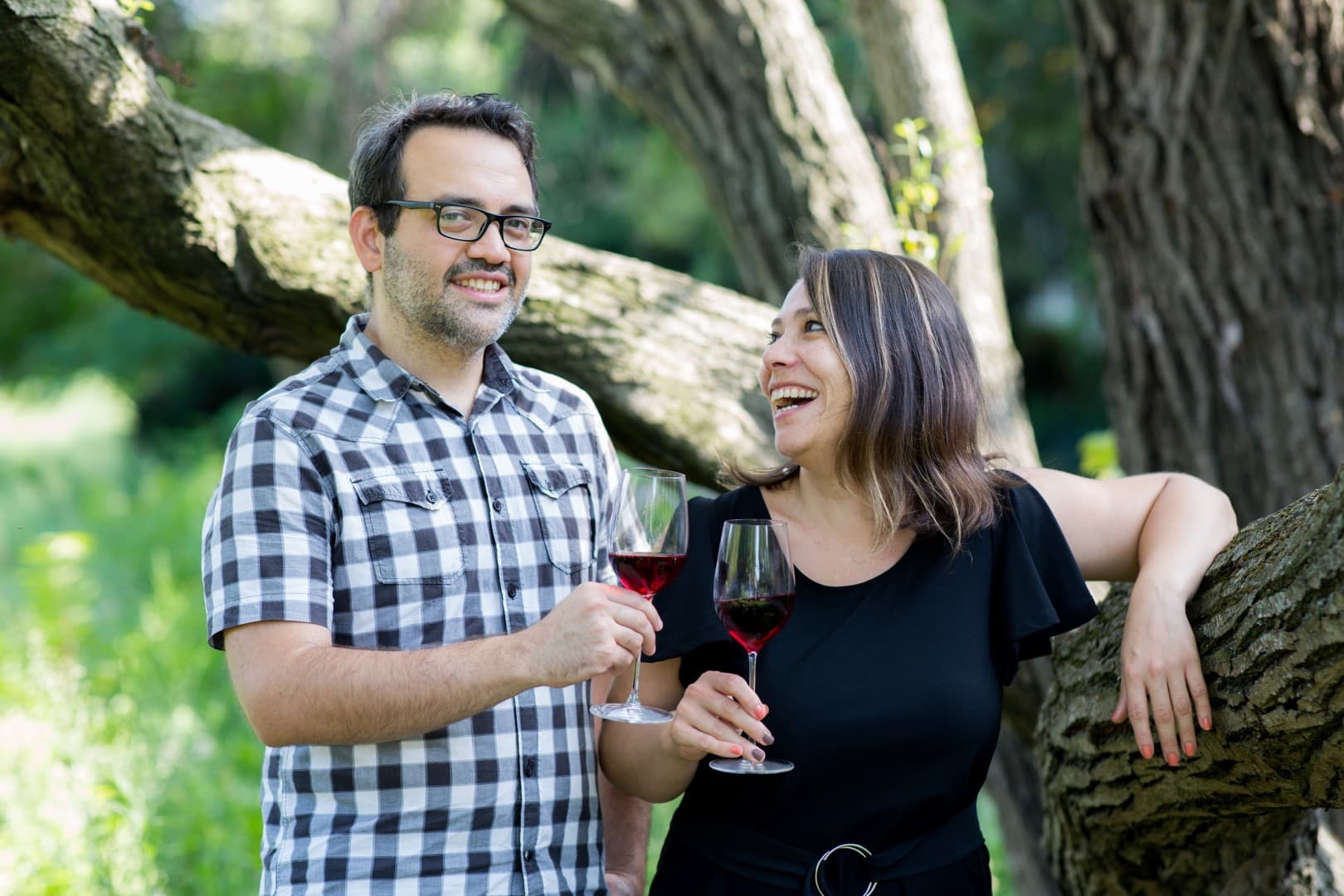
For years, any basic wine reference would tell you that the best grapes grow between 30 and 50 degrees latitude, north or south of the equator. As you move closer to the equator, the heat and humidity become too intense, while heading towards the poles brings colder climates, which prevent grapes from ripening properly. However, this long-held wisdom is starting to shift. Climate change is redrawing the boundaries of traditional wine-growing regions. Areas that have historically produced renowned wines may soon lose these defining characteristics. Remarkably, even the British, who were once outsiders in the world of winemaking, are now producing exceptional sparkling and white wines, thanks to rising temperatures. In France, the prestigious Bordeaux region—famed for its adherence to tradition—has responded by introducing new grape varieties that are better equipped to withstand higher temperatures and drought, a strategic adaptation to the evolving climate.
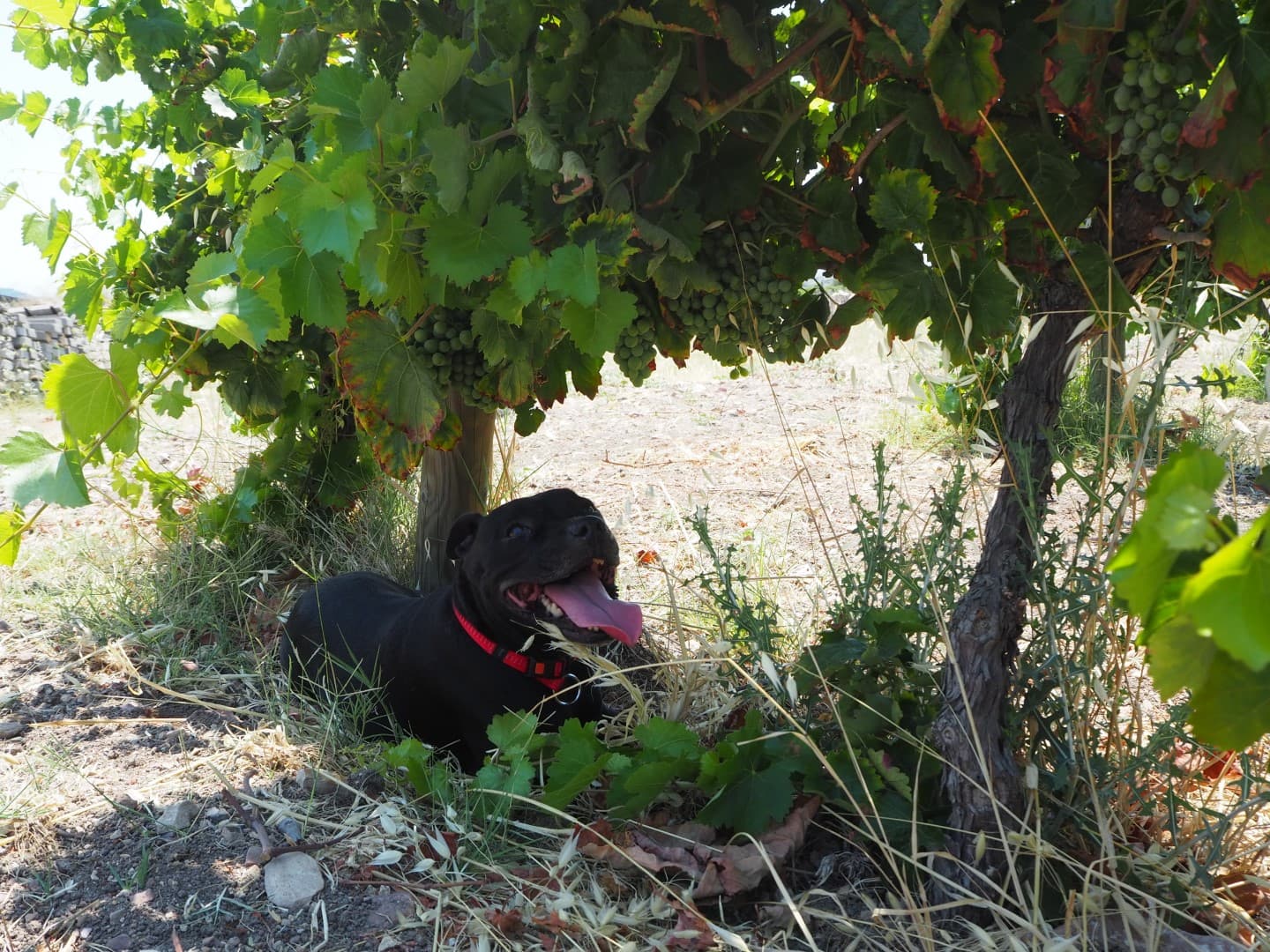
Today, it’s impossible to ignore the climate anomalies we’re experiencing in our country. From devastating forest fires and unseasonal hailstorms to floods that wreak havoc on agricultural production, these events are stark reminders of the ongoing effects of global warming. This process will undoubtedly impact every aspect of our lives. What may have once seemed like distant theories are now becoming very real, playing out before our eyes. With that in mind, let’s take a closer look at how the 2024 vintage is unfolding across different regions in Turkey.
To get some insight, I spoke with Seyit Karagözoğlu, the owner of Paşaeli, a winery known for its extensive portfolio of local grape varieties, with vineyards spanning both Thrace and the Aegean regions. Seyit shared that this year’s harvest has been unusually early due to higher temperatures. Depending on the location, grapes ripened anywhere from five days to two weeks ahead of schedule, making it difficult to plan the harvest. Working with vineyards spread across diverse regions, coupled with a variety of grape types, introduces its own set of challenges.
He gave an example from the Çal region of Denizli, where they typically use the local grape Çalkarası to produce white wine through the “white from red” method or to make rosé. However, due to the grape ripening more quickly than expected this year, they had to make swift adjustments in the production process. It’s important to note that winemaking isn’t a strictly regimented process; every season brings new variables that influence the grape’s characteristics. Because of these ever-changing conditions, winemakers are required to make new decisions each year to bring out the best in each vintage. What may work perfectly one year might not apply the next, and that’s the art—and challenge—of winemaking.
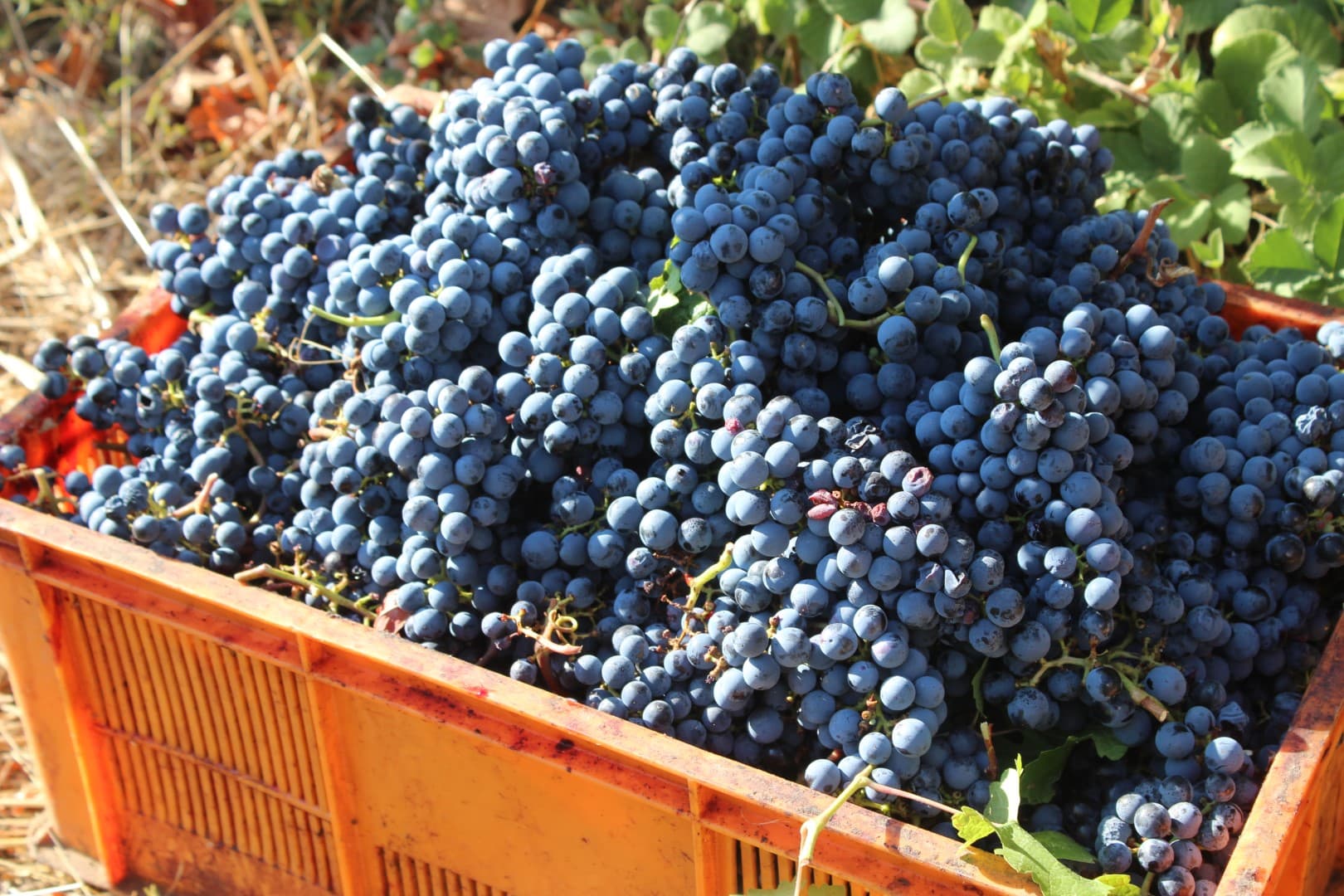
This year, altitude has played a key role in winemaking decisions, according to Seyit Karagözoğlu of Paşaeli. He explained how, for example, grapes from a lower-altitude village may reach the desired ripeness, but the acidity—essential for giving wine its refreshing character—might not be quite right. To balance this, grapes from a nearby higher-altitude vineyard, where acidity levels are livelier, are harvested quickly and blended with the lower-altitude grapes. It’s a process of constant decision-making, with winemakers adjusting their approach daily, sometimes hour by hour.
But altitude isn’t the only challenge winemakers face during the harvest. In the Bayramiç region, Seyit shared the exciting news that this year’s Karasakız and Sıdalan grapes are looking promising. However, the vineyards here present a unique set of difficulties. Many of the vines are planted close to the ground and aren’t trained on wires, making it impossible for tractors to navigate the dense rows. As a result, the grapes must be transported by horseback. Additionally, because the vines grow so low, workers spend long hours bent over to pick them—a task so grueling that the locals have a saying: “You work as if your back is breaking.”
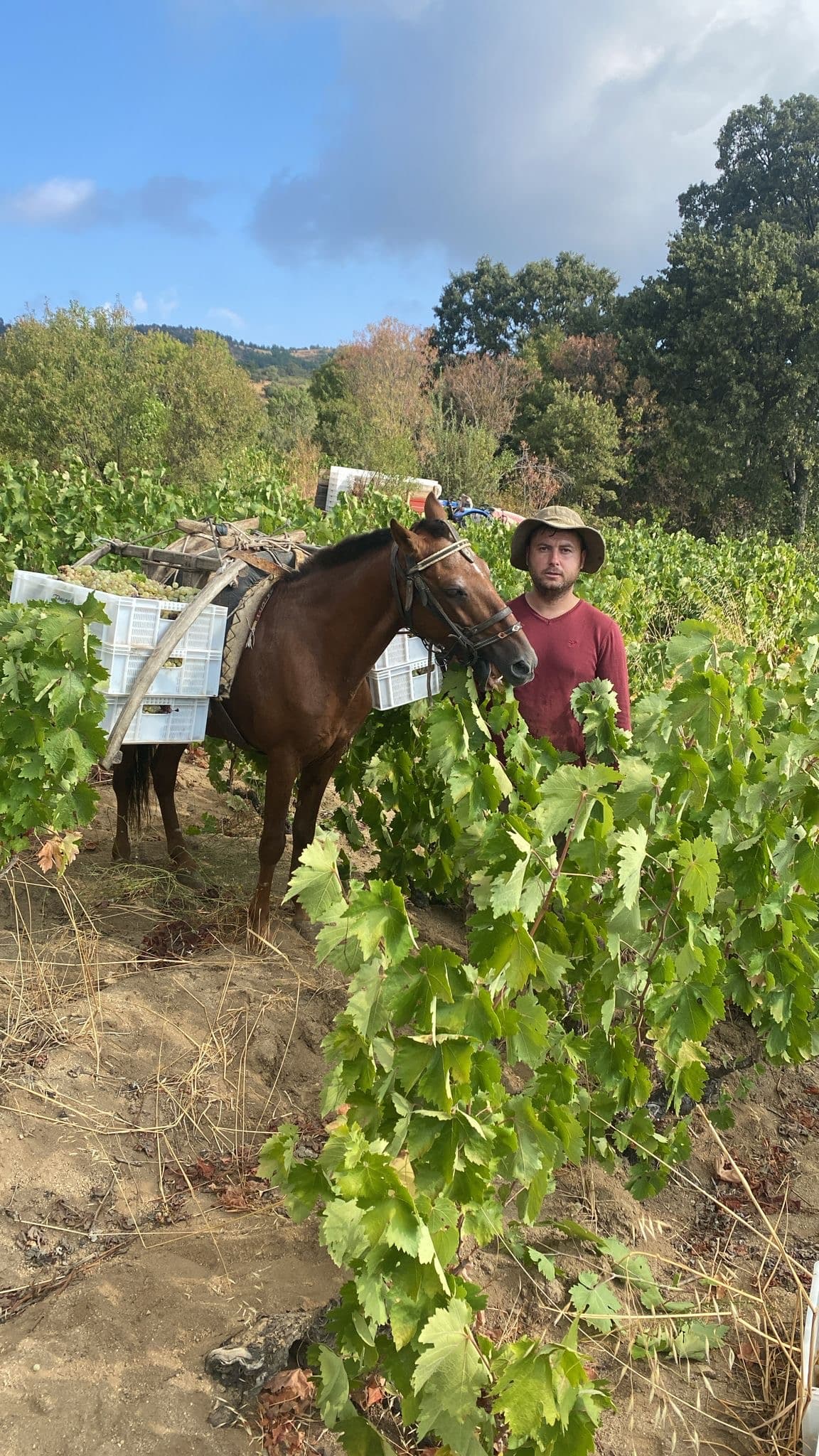
Earlier, I mentioned that Paşaeli boasts one of the largest portfolios of local grape varieties. You might be wondering which grapes fall under this category, so let me name a few: Kolorko, Aşıkara, Çakal, Yapıncak, Sultaniye, and Papaskarası.
One grape, in particular, that holds a special story is Kolorko, a variety on the brink of being forgotten. Seyit Karagözoğlu and his team embarked on a mission to revive this indigenous grape of the Thrace region by sourcing it from old, surviving vineyards. There’s even a humorous story that came out of this effort. In one of their early purchases, they realized that while the tops of the crates they bought were filled with Kolorko grapes, the bottom half was packed with Sémillon! They ended up sorting through them manually, grape by grape. Another year, they returned to a vineyard from which they had previously sourced Kolorko, only to find that the vines had been uprooted and replaced with walnut trees—without so much as a heads-up from the owner. Frustrated by these setbacks, Seyit decided to take matters into his own hands. He grafted Kolorko onto a 13-year-old Cabernet Sauvignon vineyard he owned. Luckily, the graft took, and the vineyard now produces Kolorko consistently. Through persistence and innovation, Seyit and his team managed to overcome the challenges of reviving this nearly forgotten grape variety.
Now, let’s shift our focus to Denizli, one of Turkey’s premier wine-growing regions. I had a chance to speak with Halil Bakış, a food engineer from Küp Şarapçılık, a long-standing producer in the area. The first thing he mentioned was the extreme heat and dryness that characterized this past year. In 2024, with little to no snow and rainfall below expectations, the grapes faced significant stress. Some even developed a “bead” structure, showing less-than-ideal growth. Naturally, such grapes won’t make it into wine production, leading to a lower yield for the season. Despite this, Halil assured me that the quality of the grapes destined for winemaking remains high. He’s particularly pleased with their local variety, Çalkarası, and expects Syrahs to produce excellent wine once again. He also pointed out that Denizli Narince, though traditionally a Tokat grape, might emerge as one of the standout varieties of this year. While the harvest started about 15 days earlier than usual, he also shared a concerning observation: irrigation is becoming less effective, and the wells are starting to dry up. It’s clear that water scarcity will be a growing issue for the region moving forward, with high temperatures and drought likely to pose constant challenges.
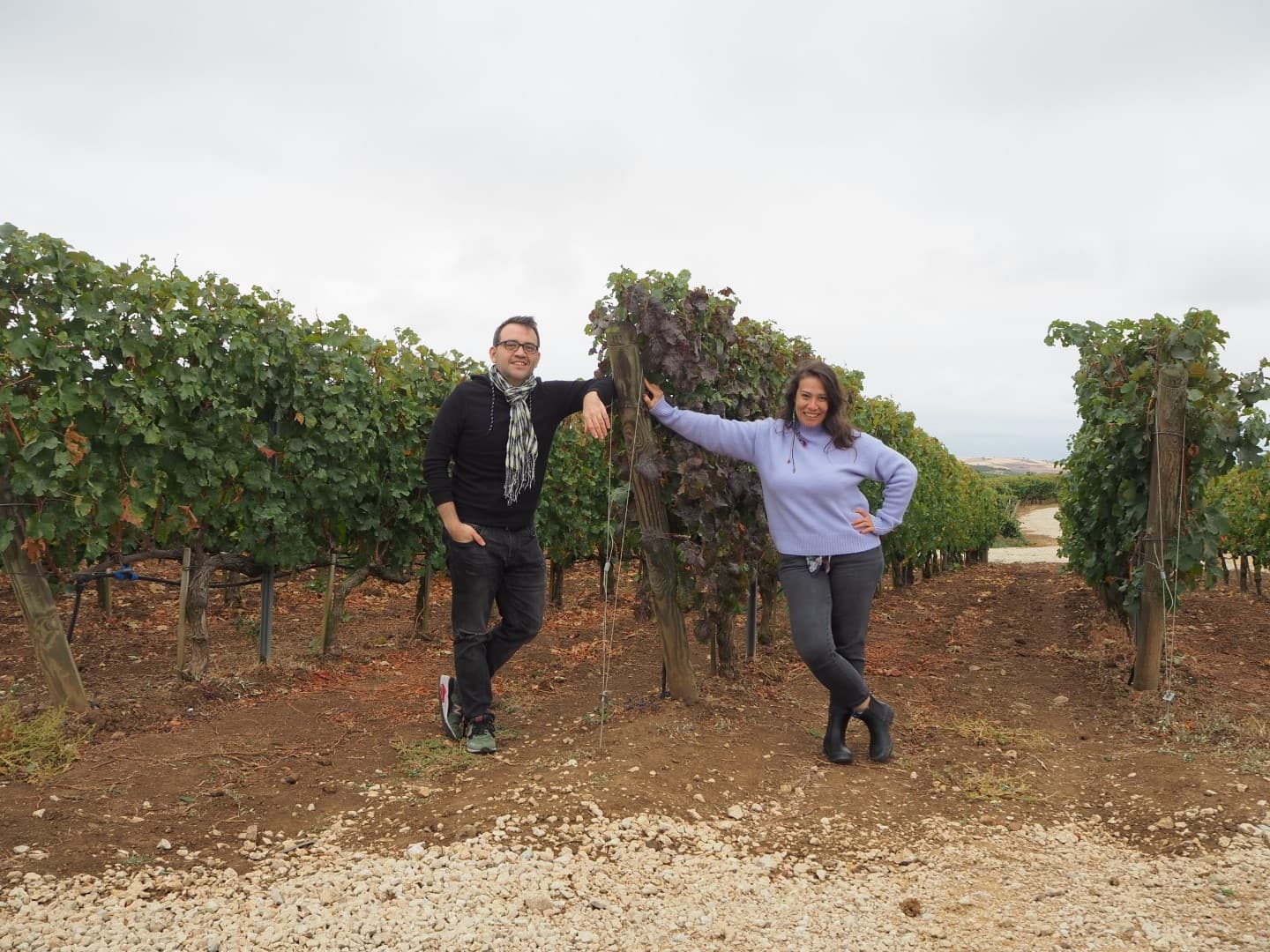
Here’s a snapshot of a triumphant moment shared with my wife, Suray, amidst the vineyards.)
Next, I had the opportunity to meet Doruk Özkan, a partner at Lycia, a winery based in Antalya. As mentioned earlier, producing wine in high temperatures is challenging. The key to success in Antalya is to seek out higher altitudes, which is exactly what they’re doing in the Elmalı region at 1,100 meters. This year, they noticed storks arriving earlier than usual, which led them to predict an early vintage. True to their forecast, they began their earliest harvest ever on August 15th.However, this year’s primary challenge has been drought. With minimal snow cover over the winter and insufficient rainfall, the grapes have suffered. Doruk Özkan estimates a 20-30 percent reduction in production due to these conditions. Despite these setbacks, he highlighted that their high altitude offers a silver lining: the cooler nights are a critical factor in mitigating some of the adverse effects of the drought.
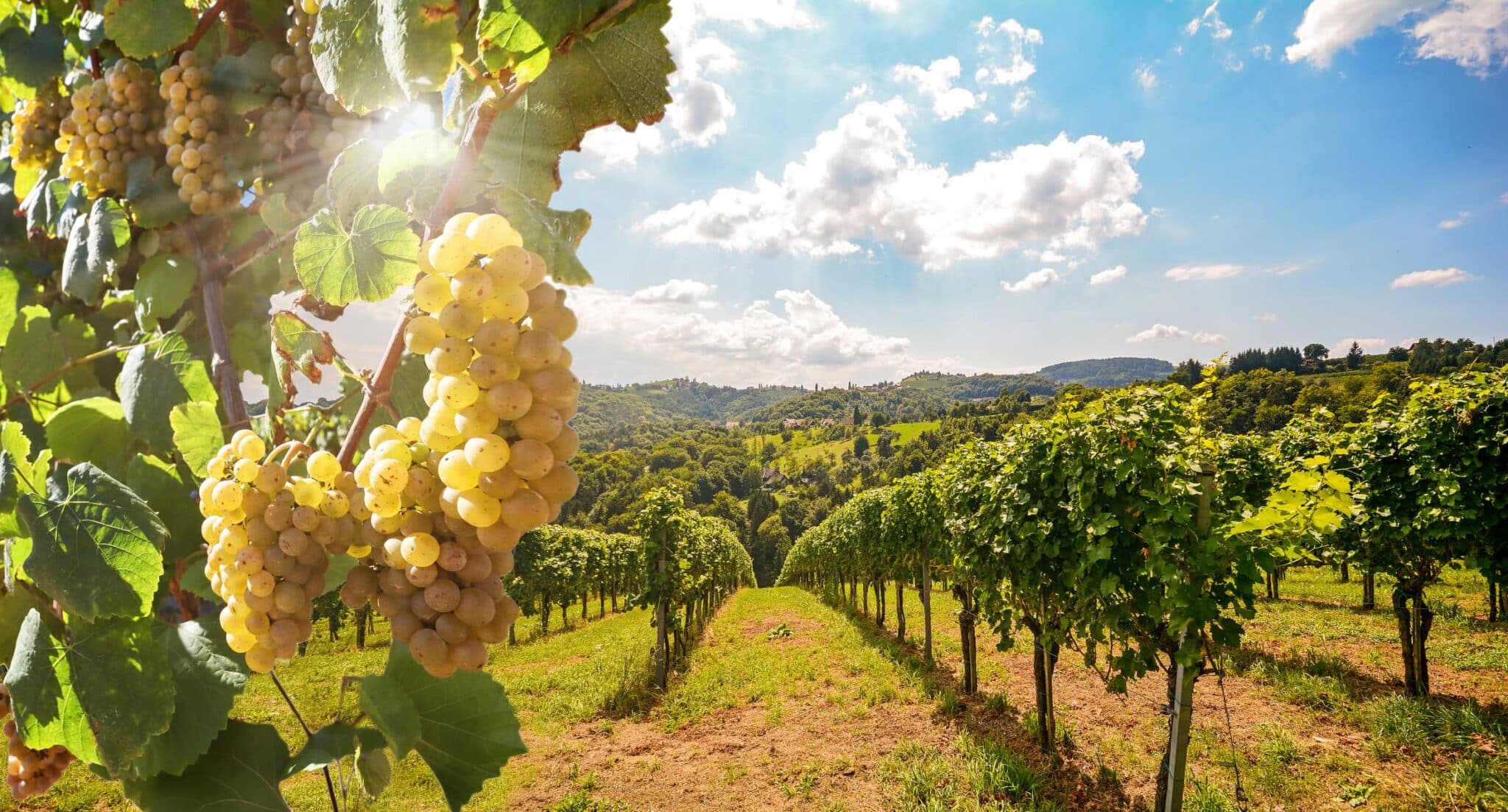
In addition to these insights, Mustafa Çamlıca, owner of Chamlija Wines, recently remarked, “2024 will be the ‘hottest,’ ‘driest,’ ‘earliest,’ and ‘shortest’ year ever,” capturing the extraordinary conditions affecting this vintage.
Initially, when drafting the first part of this article, I intended to explore the effects of global warming on viticulture but had not yet spoken with any wine producers. As I engaged with them, it became evident that they all echoed similar concerns about the challenges posed by climate change. This realization struck me deeply: the impact on our region is occurring much more rapidly than anticipated. It’s important to remember that wine is not just a final product but is intrinsically linked to agriculture, specifically grape cultivation. Viewing wine solely as a finished product, without considering the agricultural side, can lead to misguided conclusions and insufficient action. While producers are on the front lines, adapting to these changes, enhancing public awareness can play a crucial role. It not only supports the efforts of those directly affected but also helps ensure that preventive measures and initiatives gain traction and resonate with policymakers.



